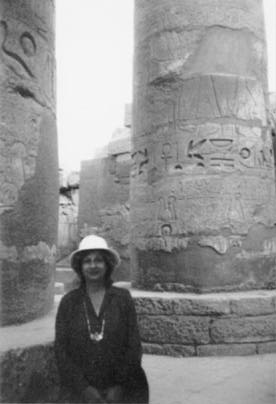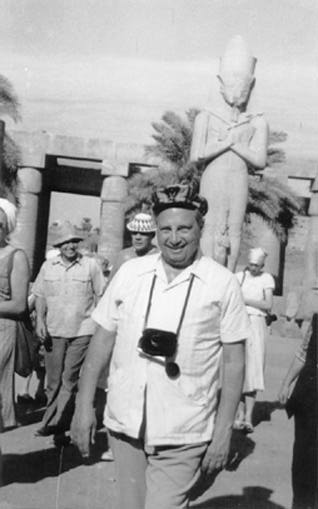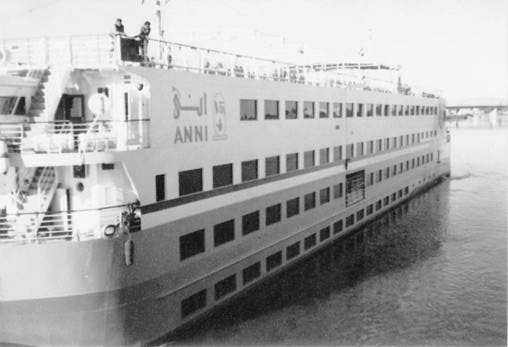My Visit to Egypt
by: Elias
Dangoor
The history of
the Jews and that of old Egypt was intertwined for a long
period of time. We know that it started when Joseph was sold
by his brothers to Egyptian traders and was taken to Egypt.
And that he became a man of prominence, when he explained
to the Pharaoh of the day, that the dream of the seven lean
and seven fat cows, was to forecast seven years of abundance
followed by seven years of famine. We neither know what was
the name of that Pharaoh nor the date. When the seven years
of famine started it also effected the land of Canaan, and
the Patriarch Jacob with his family went to Egypt to buy from
the grain stored during the years of abundance. A big number
of Canaanites also went there for the same purpose.
The Jewish Exodus
from Egypt was in the 13th century BCE. We don't know the
name of the Pharaoh against whom Moses succeeded in liberating
the Jewish people, who were then said to number 500,000. As
explained in one Encyclopaedia, this figure incorporates all
the Canaanite immigrants.
The Hebrews stayed
in Egypt about 400 years. During that period the pharaohs
shifted their capital from Lower Egypt, where they have built
the pyramids as their tombs, to Luxor, in upper Egypt, where
they dug their tombs deep in the sandstone hills of the Valley
of Kings and the Valley of Queens. It is an arid area of no
vegetation.
I went to Luxor,
the capital of the second kingdom. It is a small city of much
history. Each tomb in the Valley of the kings consists of
a long tunnel dug as a square about ten feet wide ten feet
high, and several hundreds feet deep, with coloured hieroglyphic
writings all along. The colours are still distinct. The writing
is made of pictures of birds, animals, plants, parts of the
body, etc. Because the old Egyptian language has disappeared
completely, it is not easy to read those writings. At the
end of the tunnel there is a large room with two large granite
stones brought from a quarry seventy miles away to serve as
the actual tomb.
Then there is
the Karnak Temples, built over a long period of time on a
twelve acres of land with a big number of massive columns
about thirty feet high with ceilings made of stones fifteen
feet long, six feet thick. All the stones are covered with
elaborate pictures either carved or painted. Some of the colours
are still vivid in spite of being exposed to the very hot
sun for such a long time.
The main temple
in Karnak consists of three sections joined by entrances.
Starting with a large open high walled square for the people,
with an altar of a white stone in the centre. This is followed
by a large room with high columns and ceiling, for the Pharaoh
and the priests, followed by a small covered room which is
called the "holy of holies," where only the high priest could
enter. Outside, there is a pond of water for Pharaoh and the
high priest to bath four times a day for purification.
I have no doubt
that the Jews played a major part in the architecture, building,
and decorating in Lower and Upper Egypt. It is a pity that
we have no history of what happened to them during that long
period in captivity.
It was interesting
to see how each Pharaoh was thinking only about himself, his
good life and his future tomb. The country was his property,
and the population, his slaves. A big number of people worked
for years to build his tomb.
Scribe
: The writer did not send any photograhs, so we are publishing
some of are own

Above: Renée
Dangoor among the massive colomns of the Karnak Temple
Below: Naim
Dangoor at Luxor


Above: The river-boat
that takes tourists down the Nile from Luxor to Cairo
If
you would like to make any comments or contribute to The
Scribe please contact
us.
|